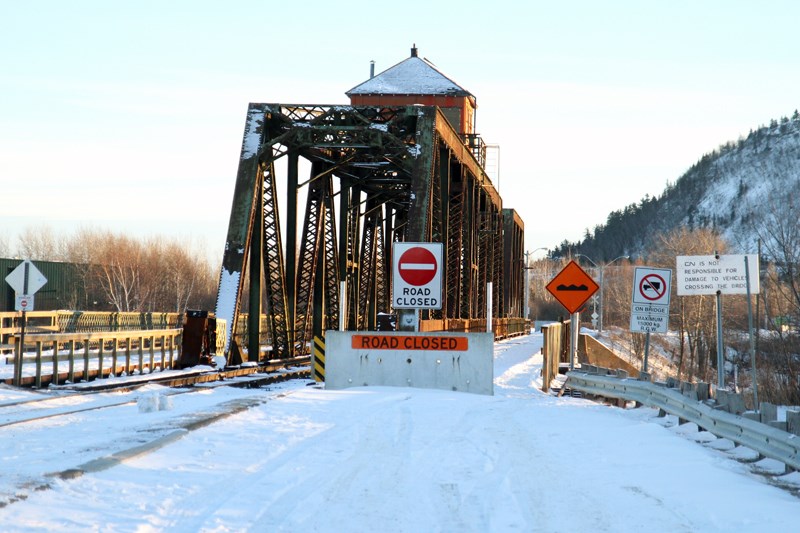THUNDER BAY – The city’s legal bid to force the Canadian National Railway to reopen the James Street to vehicular traffic will be heard in a Toronto courtroom early in the new year.
The case is scheduled to go before the Ontario Court of Appeal on Jan. 24, 2018, more than six months after the city filed its appeal of a previous Superior Court of Justice ruling in favour of CN.
The appeal seeks the court to rule the railway is obliged to “continue maintaining in perpetuity a combined railway and highway bridge in the city known as the James St. bridge, such that it may be operated safely for vehicles and pedestrian traffic” with the city having the right for motor vehicle traffic to cross the bridge, which connects the city to Fort William First Nation across the Kaministiquia River.
The city also requests the court to order CN to “take all necessary steps” to reopen the bridge, or allow the city access to the bridge so it can undertake the necessary steps to reopen the bridge at the railway’s expense.
“In particular, this appeal will decide whether CN can deprive the city of its perpetual contractual right to have the bridge open for the use of its residents and the respondent Fort William First Nation, while CN continues to enjoy the perpetual contractual rights granted to Grand Trunk in 1905, including the right to run trains over the city’s streets, which CN continues to do to this day,” the notice of appeal reads.
The bridge has been closed to traffic since a fire broke out on the northern approach spans on the night of Oct. 29, 2013. While trains resumed crossing later that week, the railway restricted access to the roadway portion of the bridge.
In June, Superior Court Justice Patrick Smith ruled the city failed to meet its legal standard of defining exactly what measures CN would have to undertake to make the bridge safe for motor vehicle traffic.
“Without a specific and detailed proposal from the city – one that has been tested and approved as structurally safe for public traffic, this court is left without reliable evidence upon which to formulate the orders that the city is seeking,” Smith wrote in his decision.
“This court cannot make an order based upon conjecture, speculation or the possibility that an ‘idea’ may be workable. This is all the more critical when the safety of the public is at risk. Without evidence, it is not possible to determine whether the work required to open the bridge safely is within the scope of what was intended by the parties signing the 1906 agreement.”
Smith also determined the bridge, which was built in 1908, was not constructed for the estimated loads of 8,900 motor vehicles per day it experienced prior to its closure.
The city’s appeal also argues the prolonged closure of the bridge has resulted in “increased accidents, including fatalities, at the city intersection that, because of the closure of the bridge, has had to absorb the traffic that would otherwise have crossed the bridge.”
